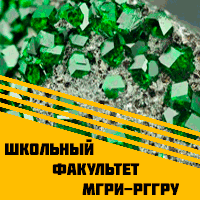Добрый день, Коллеги. Важное сообщение, просьба принять участие. Музей Ферсмана ищет помощь для реставрационных работ в помещении. Подробности по ссылке
Highly siderophile and strongly chalcophile elements in high-temperature geochemistry and cosmochemistry / Высокосидерофильные и сильно халькофильные элементы в высокотемпературной геохимии и космохимии
In high-temperature geochemistry and cosmochemistry, highly siderophile and strongly chalophile elements can be defined as strongly preferring metal or sulfide, respectively, relative to silicate or oxide phases. The highly siderophile elements (HSE) comprise Re, Os, Ir, Ru, Pt, Rh, Pd, and Au and are defined by their extreme partitioning (>104) into the metallic
phase, but will also strongly partition into sulfide phases, in the absence of metal. The HSE are highly refractory, as indicated by their high melting and condensation temperatures and were therefore concentrated in early accreted nebular materials. Within the HSE are the platinumgroup elements (PGE), which include the six elements lying in the d-block of the periodic table (groups 8, 9, and 10, periods 5 and 6), i.e., Os, Ir, Ru, Pt, Rh and Pd. These six elements tend to exist in the metallic state, or bond with chalcogens (S, Se, Te) or pnictogens (P, As, Sb, Bi). Rhenium and Au do not necessarily behave as coherently as the PGE, due to their differing electronegativity and oxidation states. For these reasons, a clear definition between the discussion of the PGE and the HSE (PGE, Re and Au) exists in the literature, especially in economic geology, industrial, or bio-medical studies. <...>




